OTHER MATERIALS
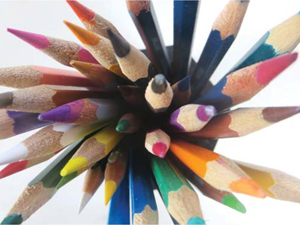
Pencils, Watercolor Pencils and Crayons
There are many things you can do with watercolor crayons: You can use them to add details that would be difficult to paint. You can use them to add designs to a background, or you can use them to add brightness and contrast to some areas of a painting. Use them dry or paint over them after application.
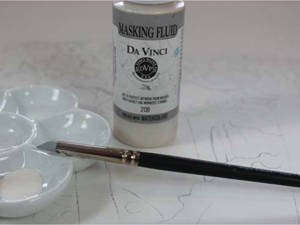
Masking Fluid
Masking fluid comes in handy when painting with watercolors because it is an easy way to prevent some areas from being painted over, especially if those areas are small or have complicated contours that would be too tricky to paint around. You can preserve areas of white paper or areas that have already been painted (although you might lose some of the paint pigments when the masking fluid is removed).
Stir, Do Not Shake, and Why is It So Stinky?
Masking fluid has a rather unpleasant odor due to the ammonia in its composition that acts as a preservative for the latex in suspension that is its main ingredient. Avoid shaking the bottle, as this causes the latex to accumulate into clumps. Stir it instead. Masking fluid may be white, but usually a very light gray or yellow color is added to make it more visible. Always let masking fluid dry naturally.

Tissues
There are many ways to lift watercolor and water from your paper but tissues are the easiest and fastest. It is always a good idea to keep a box of lotion-free tissues close at hand.
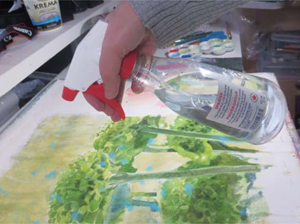
Spray Bottle
Depending on your style of painting, you might have more or less use for a spray bottle. I use a spray bottle a lot because I like to spray paintings with water after they are finished. The paint moves and mixes freely and loosely with the water and gives my paintings an interesting “dirty” look. A spray bottle can also be used to keep paint moist on a palette or to add a bit of water to a mix or to keep the watercolor paper wet when painting wet on wet.
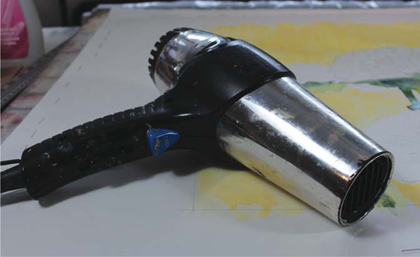
Hair Dryer
Feeling impatient? Tired of waiting for that wash to dry? You can reduce drying time by using a hair dryer. You’ll get the best results if the heat isn’t too hot, and don’t let the hair dryer get too close to the paper—you don’t want to damage the fibers.
And try not to be overzealous with the force of the air you are blowing onto your painting—a high-pressured airflow can cause drips of paint to blow across your paper.
Also, a hair dryer should not be used to dry masking fluid. This might be tempting since masking fluid takes a long time to dry, but it can cause the masking fluid to bond too strongly to the paper, making it very difficult to remove.
Once masking fluid has air dried, it is possible to use a hair dryer to dry subsequent layers of paint without negative consequence.

Soap
Soap can be added to watercolor to add texture. It also works well for removing greasy fingerprints that can repel paint from the paper. Soap is most often used with Yupo paper; it makes paint more manageable by adding body to it.
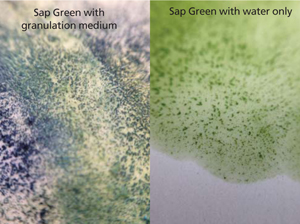
Granulation Medium
Granulation medium is an additive that causes a watercolor mix that would not otherwise granulate to granulate. Results will vary depending on the ratio of medium to water in your mix. For optimal effects, mix color pigments directly into granulation medium.
Alcohol, Acetone, Bleach and Lemon Juice

Painting with Alcohol and Acetone
Alcohol and acetone work more or less the same way with watercolor. Used as solvents, they create interesting textures when mixed into your washes. Or, if you drip them onto a wet wash, you’ll see round highlighted shapes.
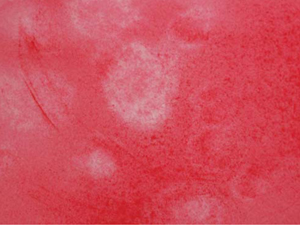
Painting with Bleach
Adding bleach to a wet wash will result in highlights. Bleach works better with certain pigments than others and might alter the hue of the subsequent washes you paint on top of any bleached areas.
Bleach will also compromise the archival properties of your paper, so this is a technique that I recommend only for practice or for fun.

Painting with Lemon Juice
Lemon juice will result in an effect similar to bleach on a wet watercolor wash. Even though it is a fun effect, I would not recommend using lemon on an important painting. When you paint with lemon juice, you add acidity to your pH neutral paper. Therefore, your work won’t be archival, and your painting may degrade. But it is perfect for those times you feel adventurous.
What is Archival Friendly and What is Not?
Before using anything other than water and paint in your paintings, you might want to consider how important it is to you to preserve the archival properties of your paper. Watercolor paper is made from cellulose fibers that have been rendered pH neutral for preservation purposes. Using a handmade soap, for example, will add a basic pH to your paper. Using lemon juice will add an acidic pH. Using bleach will cause the sodium ions in your paper to accelerate the degradation of the cellulose fibers.









